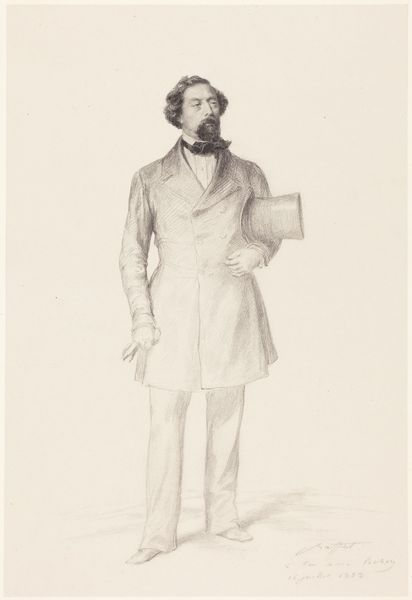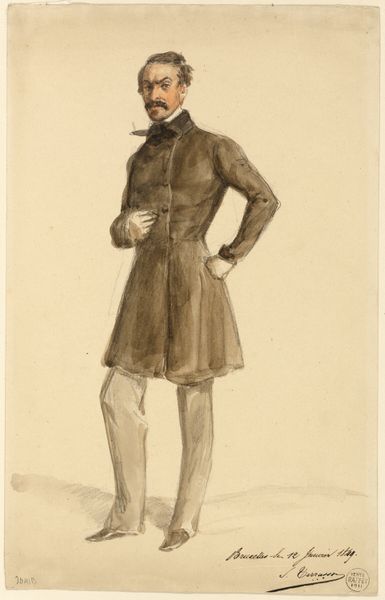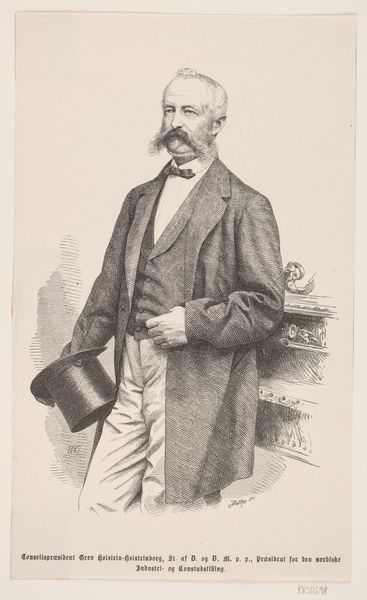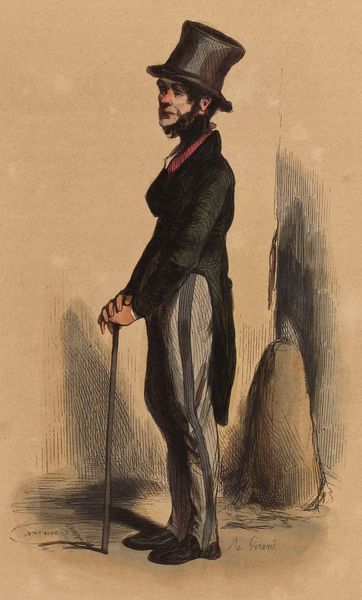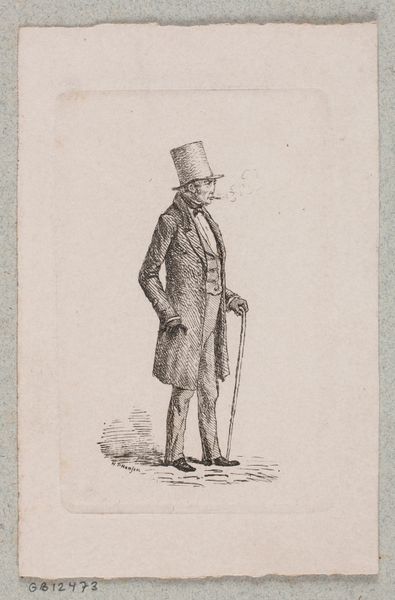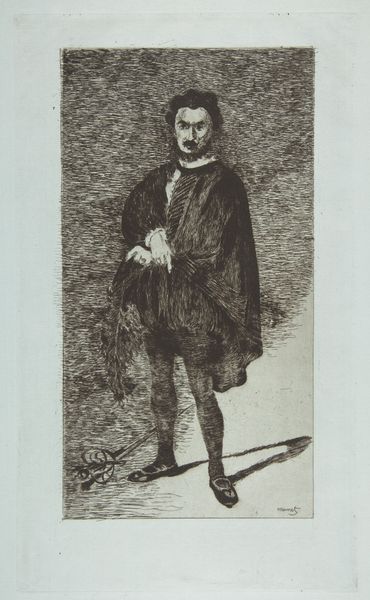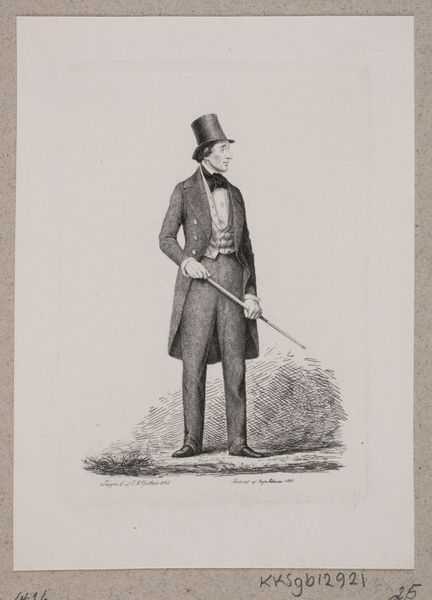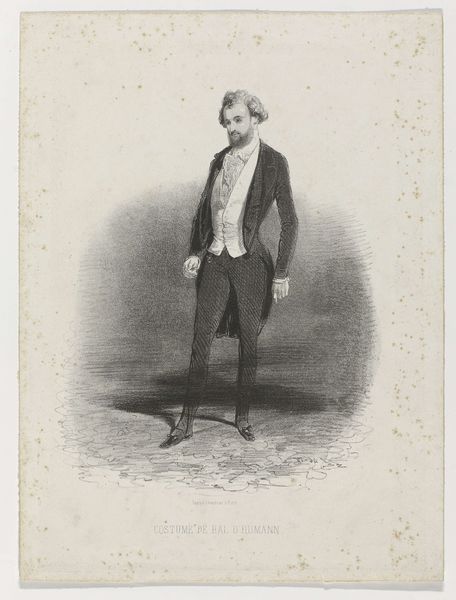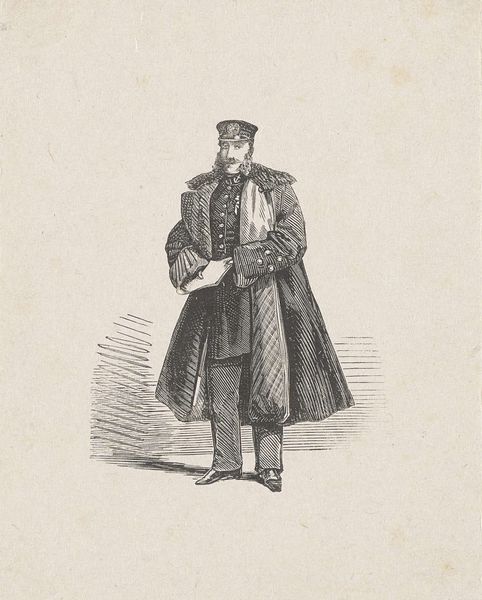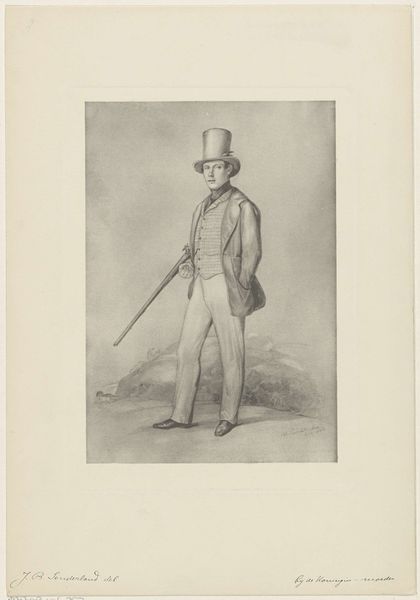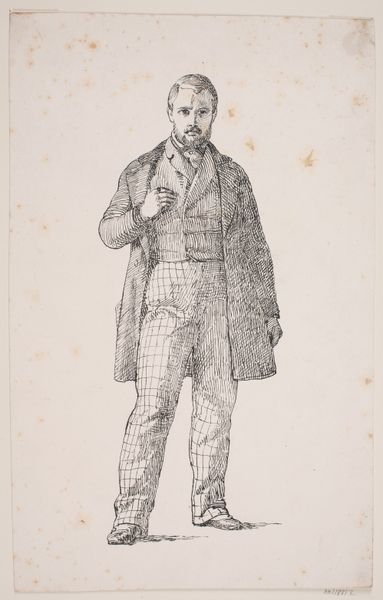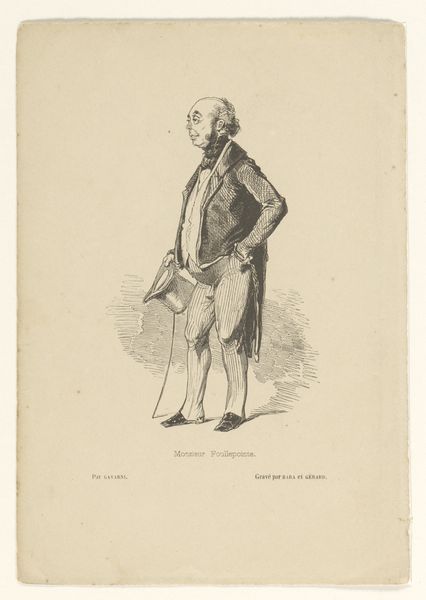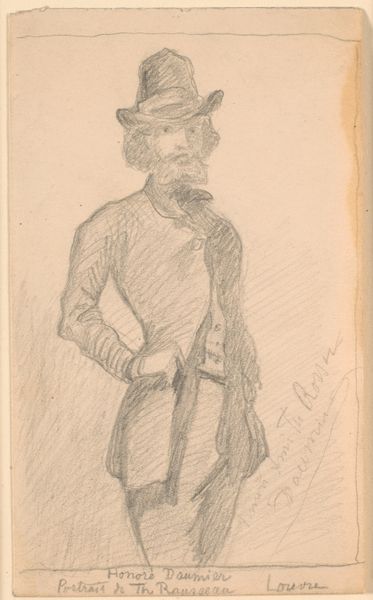
drawing, print, graphite, engraving
#
portrait
#
pencil drawn
#
drawing
# print
#
pencil sketch
#
romanticism
#
france
#
graphite
#
genre-painting
#
history-painting
#
engraving
Dimensions: 7 7/8 x 5 5/16 in. (20 x 13.49 cm) (image)10 1/16 x 6 15/16 in. (25.56 x 17.62 cm) (sheet)
Copyright: Public Domain
Curator: Here we have Paul Gavarni’s “Costume d’hiver,” created in 1846. The print now resides here at the Minneapolis Institute of Art. Editor: It has a rather melancholy air to it, don't you think? The figure stands alone, almost fading into the sketched background, yet meticulously captured in what seems to be a straightforward manner. Curator: Gavarni was known for his astute observations of Parisian life. The print showcases fashion, certainly, but more deeply reflects the social hierarchies of the period, distributed via journals and affordable publications, shaping ideas of the boulevards. Editor: Let's talk process: the detail in the figure's coat, the waistcoat— likely graphite or a similar medium, then transferred via engraving, perhaps. Note how the clothing drapes and catches light, hinting at specific fabric weights, all carefully considered choices that dictate its dissemination and affordability. Curator: Precisely. Prints such as this allowed a wider audience to partake in visual culture and to consume images, playing a key role in the era's emerging consumerism. In fact, many would argue these prints codified "fashion" and trends that now pervade culture. Editor: Right. Consider the labor involved – the initial drawing, the engraver’s work translating that to a plate. And of course the printing process itself, enabling mass production. It transformed what could be exclusive markers of class into attainable commodities for a new class. Curator: It’s also interesting to consider how the art market shaped the demand for these kinds of images. Prints allowed Gavarni, and the journals that commissioned his work, to circulate political and social critiques under the guise of genre scenes. Editor: So, this 'Costume d'hiver' serves as more than just documentation. We're looking at a carefully constructed statement on societal structures. The way Gavarni depicts him has purpose – maybe to subtly challenge the norms by showing its accessibility? Curator: Absolutely. By portraying this 'winter costume' in print, Gavarni’s piece functions as a mirror reflecting both the allure and accessibility of modern life during the mid-19th century. Editor: Considering how widely these images were distributed and consumed, Gavarni’s meticulous labor transformed something into something both accessible, desirable, and open to further transformation and adoption in the material world.
Comments
No comments
Be the first to comment and join the conversation on the ultimate creative platform.
